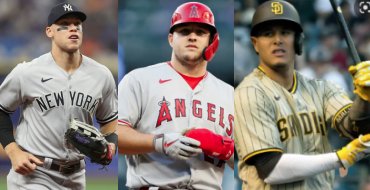The Preakness is the second leg of the Triple Crown, and it follows just two weeks after the Kentucky Derby, but for bettors those two races really couldn’t be much more different. Here are five key differences between the two races that bettors need to keep in mind to succeed over the long term:

Distance – The Derby is run at a mile and a quarter while the Preakness is a mile and 3/16. It might not seem like 1/16 of a mile sounds significant, but in racing terms it really is. The Derby distance is beyond the comfortable range of most horses – especially when they are three year olds and not fully mature. It’s obviously the last part of that race that is a problem for horses that struggle, so having the finish line come sooner – about six seconds sooner – is good news for most horses. The shorter distance means that horses that struggled to get the Derby distance might handle this one better. It also means that horses that had a big edge in the Derby because they had particularly strong stamina traits won’t have as much of an edge in the Preakness.
Short rest – Horses who run in the Derby and the Preakness have to race just two weeks apart. That type of break used to be common, but now top level horses never run back that fast. Since they don’t do it we can’t know how they are going to handle it, but their ability to handle it is a big factor in how well they will do in the Preakness. You need to combine a lot of clues to get a good sense of what is likely here. How well did the horse reportedly eat the morning after the Derby? Was his exercise routine between the Derby and Preakness typical, or was it abnormal? How well did he work in those workouts? Has the trainer had experience – and success – with these short turnarounds? Has the horse run back in relatively short time in the past – like three weeks? Did he look totally spent after the Derby, or did he seem to handle it well? By assessing these factors you can get a sense of how well they will respond to this unique challenge.
Fresh horses – Typically about half the field in the Preakness is made up of horses that did not run in the Derby. Some of these new horses are going to be much fresher than the Derby horses, and in many cases they are more familiar with running at Pimlico than the Derby horses will be. The Derby taught us some lessons about how the horses coming out of that race stack up to each other, but these new horses can be hard to stack up against the Derby horses. For the most part these horses are longshots. There isn’t a thoroughbred owner out there who dreams of winning the Preakness more than winning the Derby, so if the horse was able to qualify for the Derby and be a legitimate threat then he would have been in Louisville. Sometimes, though, these invaders are able to come out on top – Bernardini is the best example of that. Some of the fresh horses were aimed at the Derby but didn’t have enough earnings to get in and have sat on the sidelines until now. That means that they were likely being trained to peak two weeks before this race, and they could be stale by now. Bettors who want to be long term winners at the Preakness need to be able to quickly and effectively assess whether the new invaders are legitimate threats, or whether they are just place fillers. Who have they beaten? Can they handle the distance? Do they have class? Is their best race ahead of them? Is that best race good enough to beat the best of the Derby field?
Field size – The Preakness is capped at 14 runners. The Derby has 20 horses in the field. The Preakness field is bigger than most, but much smaller than the Derby one, and it packs far fewer potential concerns as a result. In the Derby, horses are almost guaranteed to encounter trouble of some sort at one point. In the Preakness it can be easier for a horse to find a smooth trip. It’s also more likely that a horse will be able to run the trip of their choice in a smaller field because they are less likely to encounter another horse that will want to run the same trip and will fight them for positioning. You still need to be concerned about field dynamics and the likely shape of the race when handicapping the Preakness, but there is a much better chance than there is in the Derby that the best horse will be able to emerge unscathed and win the race.

Derby winner – The presence of the Derby winner makes things simultaneously easier and harder for handicappers. It’s easier because it is easy to know who the horse at the top of their game is. There is no harder race for a three year old to win than the Derby, so the horse that won that race is tough, versatile, and in strong form. The Derby winner doesn’t always win the Preakness, but it is rare that they aren’t a significant factor in the race. On the downside, though, the Derby winner is relentlessly bet down by the public. A horse that was a legitimate 20/1 or higher in the Derby can go off at 2/1 or 3/1 in the Preakness because of the public action. Because of the nature of pari-mutuel betting used in horse racing, that means that there is likely almost no value in the Derby winner. You can’t usually ignore him, though, so you have to be very careful in constructing your bets so that you can find ways to wring as much value out of the situation as you can. The good news is that the rest of the horses typically have fair or inflated prices because the action is so concentrated on the favorite.






